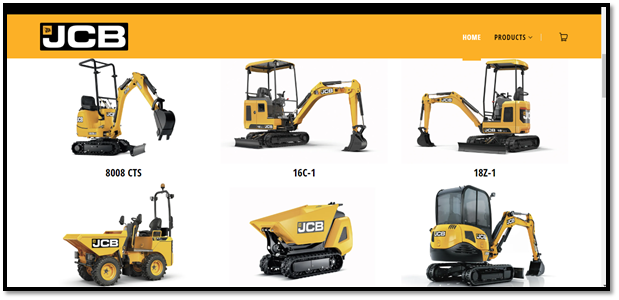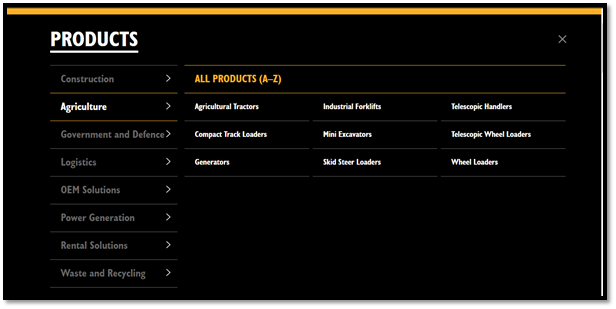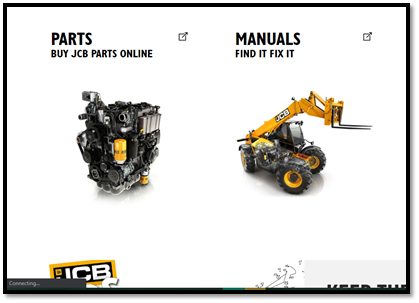Marketing Assignment: Website Analysis Of JCB
Question
Task:
Marketing Assignment Part A
The activities from Unit 1-10 you are expected to discuss a given website and identify which audience(s) it is targeted to.
Drawing on these activities and any earlier relevant learning, explain the process you went through when deciding on this specific website.
Identify the strong and weak features of the website by providing suitable reasons.
In summary, point 1 of Part A must include the idea behind the website of the company you have chosen.
Identify the customers being targeted by the website by explaining with suitable evidence and examples. Describe one of the groups being targeted.
In summary, point 2 of Part A you should clearly identify:
- which audience groups (segments) it is targeting through its website
- what are the potential barriers the company is encountering in implementing this idea
- what evidence (e.g. other websites, reports, online library resources) was used to help you make this analysis decisions showing how the selected evidence informed your thinking.
It is important that you justify and explain why you made particular decisions in supporting the website you have considered.
Marketing Assignment Part B
In this task you will think about the ways in which brand identity is expressed. You will also think about how this relates to brand image and the issues which can arise when there is a gap between the two.
Spend some time exploring the website you have chosen in Part A about how the brand identity is expressed such as
The elements of the brand can you see. Understand the manner brand owner combined the brand name, visual appearance of the product and service to portray the brand
For Part B, you are expected to address these components:
Identify how the brand is currently expressed in the company website you have chosen. Evaluate elements used to assemble the brand
Explain the brand image of the company you have considered. Is there a gap between your brand image and the brand identity which is portrayed on the website? Explain your reasons.
Through evidence and examples, justify how the company might improve its branding
Answer
Marketing Assignment Part A
Targeted Audience on JCB website
The companies are established to resolve issues with commercial solutions. Some of the companies form competitive advantage with the products they sell for countering societal issues. JCB is named after its founder Joseph Cyril Bamford in the year 1945. It produces approximately more than 300 machines that include diggers, excavating equipment, tractors and diesel driven engines. In many regions of the world, JCB is referred to as a description of all mechanical vehicles. The company exports its products to more than 100 countries in the world while employing 12000 individuals in more than 4 continents (NBM&CW, 2020). It can be said that power and strength can be depicted as the brand image of JCB.
The online website of JCB provides relevant information to the user. It can be said that the website provides detailed information about the targeted audience it deals with. The products and services of JCB are targeted to majorly industrial units like construction companies that use machinery and equipment for transporting and uplifting heavy building materials. In this view, industries like irrigation, power generation, ports, mining, railways, real estate, roads, and rural areas (JCB, 2020a).Therefore, small- scale and large companies both are targeted through the website.
In the reports of Thompson (2019)it was explained that website analysis can be identified by relating the company goals with the web presence of the firm. In the words of Thompson (2019), website effectiveness plays a crucial role in retaining the customers on the company web page. Thus, if the customer finds difficulty in searching the company website, he would switch to other competitors. the customer searches specific companies based on confidence and brand recognition. For instance, construction companies will majorly search for JCB as it is an established brand in supplying machinery. It is essential for improving the brand experience through the website to retain its customers. The other important feature is the user-friendliness of the website. The increasing use of social media websites has changed the communications pattern of individuals. Thus, the websites should be designed in a way that will provide all the information by just one click. In other words, the ease of getting information about the products and services drives customer traffic to the website.

Figure 1: Products DisplayFeature on JCB
Organizing digital presence helps companies to increase their customer base. Thus, in theexamination of the JCB website one can attain information about the company's products and services. In comparison to the competitor's website like Larsen and Turbo, the renting or leasing information is not provided while one has to open several pages for choosing the appropriate type of equipment. Also, the website lacked prices for some of the equipment thus, one cannot analyze its budget while browsing through the web page of L&T (L&T, 2020). The company also operates in the similar field like JCB.

Figure 2: Product and sector Segmentation of JCB
JCB website is simple while product details and services can be easily found on the web page. One can attain information about the leasing costs of a particular product. The products are also sorted according to the industry requirements. Additionally, the potential candidates can also find job opportunities on the JCB website. The features like user-friendliness and website effectiveness are fulfilled while browsing through the website of JCB. The website was chosen by comparing both the companies that are Larsen and Turbo.
It can be said that market segmentation can be clearly understood by the JCB website as its customer needs are portrayed on the website. Market segmentation enables the company to segment its targeted group and position its product for earning revenue (Pires and Stanton, 2018 Chap 3).In other words, market segmentation is done through demographics aspects, as one can find products and services based on location and income (Lofland, 2017).While browsing through the website, one can find the difference between the agricultural and compaction equipment. One can also select lightweight and heavy equipment. This portrays that JCB sells products to business clients like industries as well as small-scale units. Targeting is done to small- and large-scale manufacturing industrial units while the provision of online ordering and leasing procedures depicts the positioning strategy of JCB (JCB, 2020b). Additionally, the ease of finding products and relevant knowledge on the website helps in enhancing customer experience thus further leads to revenue generation.The only limiting factor of the website that it could not be easily located on the first search on Google as it has many connecting webpages according to the location.
Advantages and Disadvantages of JCB Website
JCB website has many advantages and disadvantages. The website is well designed to attract its customers. It can be clearly understood that the website targets business clients. One can find details about the product while also understand the purchasing and leasing costs of the equipment. The company also delivers the product by online orders while one can also attain the information about local dealers by putting the location. It is easy to locate products on the website due to segregation like lightweight, heavyweight, industry specifications, and others. Additionally, the L&T website is also segregated according to sectors but it takes time to browse through the pages for attaining information about a selected product. On the contrary, JCN has clear details of the equipment thatare available in a particular region or industry
However, the website too many branches for every country or region, thus it becomes difficult to locate the website for browsing and ordering. The website is not designed with automated chatbots so the customer needs to call or message on the detail given.This increases the waiting time of the customers as the queries are not solved within a time frame. Additionally, while browsing the L&T website one can immediately understand the product through sector segmentation. However, this feature is not available on the JCB webpage. The webpage is sorted according to product segments. Since the website is varied for different regions, the chatbot will help answer the queries than the toll-free number and email provided on the website.
Part B
Brand Identity
Brand Identity is referred to as the visible elements of the firm. This includes color, logo, and others which helps the customers to distinguish brands from one- another (Burmann, Riley, Halaszovich and Schade, 2017 P 18). However, there is a difference between brand identity and brand image. Brand identity is the visible feature of the firm while the brand image is a result of the aforementioned elements. The image is built through the services and customer relationship.
In this view, the brand identity of JCB is expressed in colors, logo, and its equipment. JCB products are identified based on the color and logo. The color of JCB is a combination of yellow and black. The brand is so famous that bulldozers of any company are identified as JCB is many developing nations like India. The kids also identify the brand as many toys have developed depicting the usability of the products.
The brand identity aims to portray a positive image determining its objectives and goals. It is said that consistent marketing helps in building a reliable brand identity which further helps in generating revenue (Berndt and Hollebeek, 2019 Chap 8). The positive brand identity helps the customers to be associated with the name. For instance, in primitive times, hand made tools were used in the construction and agricultural production. However, the launch of JCB bulldozers, excavators, and other rugged instruments have solved issues related to manual working in dangerous locations. Many small- and large-scale industries leased or rented JCB products as they were expensive but it had the potential of reducing workload and life-threatening situations in mines and other locations. It can be said that JCB has built a positive brand identity and in recent times, its diverse product lines help in solving issues in may industries. While browsing through the website, brand identity can easily be identified through its color combination and logo on the products. The website of JCB is designed with yellow and black color combinations which are also the color of the products. Thus, the website gives a clear idea about brand identity. All the products are distinctly labelled with the JCB logo. Thus, not only heavy vehicles but intermediate parts like motors are also designed with the logo on the yellow background. The logo on the vehicles is designed on black background with the yellow as its body while it is reversed in the case of the intermediate products. One browsing the website can easily identify the different product lines through the logo and color combinations of the brand.

Figure 3: Colour Combination difference between the vehicles and Intermediate products.
JCB brand image of the company depicts support, strength, and sharing. The company has a brand identity that depicts problem-solving support to the manual work due to which many workers have lost their life. The brand identity has resulted in a positive brand image of the company. JCB's equipment has been used in many industries for decades. There has no accidents or incidents that have been reported by using JCB products. In the developing regions, many small- and large-scale industries are incapable of using expensive machinery but the leasing services at 0% interest by JCB have built the brand recognition and image of the company. The brand image is so enhanced that the company does not require spending on several marketing strategies. It is the 4th largest construction and manufacturing equipment company in the world. Many plastic toys have been made depicting smaller versions of the original product. This has increased brand awareness of the firm amongst all age groups.
The gap in Brand Identity and Brand Image
In works of Zantides (2019 P164), it was depicted that brand identity might not build a positive brand image on the stakeholders. For instance, brand identity like logo and color might attract customers but the service and quality of the products build the brand image and also distinguishes it from other brands. It can be said that brand identity and image are interrelated and interdependent aspects.
There is no gap existing in the brand image and identity of JCB. The brand identity like the color combination is yellow and black is so evident that machinery on the roads or construction sites is identified as JCB. This also portrays the brand image that is trust and power. The company forms the backbone of many construction sites due to its various excavating and digging machinery. The service quality of the products is highly dependable that is always built a positive brand image.
Recommendations for Improving Branding
The company should devise a budget for marketing its products and services. It can be said that many small-scale industries are unaware of the different light weights and other variance machinery that is available under JCB. The marketing techniques involve online forums, use of print and electronic media promoting new its new and existing products. The company should also innovate its existing products and promote them for sustaining high competition in the market. After analyzing the company's websites and other available articles on the web. It can be said that the company has a huge market but lack of efficient marketing techniques, its customer is limited. The company should expand in many developing regions where the market using advanced machinery is broad.
Reference List
Berndt, A. and Hollebeek, L.D., 2019. Brand 8 image and reputation development in higher education institutions. Strategic Brand Management in Higher Education.
Burmann, C., Riley, N.M., Halaszovich, T. and Schade, M., 2017. The concept of identity-based brand management. In Identity-Based Brand Management (pp. 17-90). Springer Gabler, Wiesbaden.
JCB, 2020a. Explore Our Machines. [online] Available at:
JCB, 2020b.You order online, we deliver direct. [online] Available at:
L&T, 2020. Products & Services. [online] Available at:
Lofland, L.H., 2017. The public realm: Exploring the city's quintessential social territory. Routledge.
NBM&CW, 2020. JCB Showcases Its Brand and Product Portfolio Prowess. Marketing assignment [online] Available at:
Pires, G.D. and Stanton, J., 2018. Ethnic Marketing: Theory, Practice and Entrepreneurship. Routledge.
Thompson, C., Shelton, M., Stark, E., Walker, M., Schechter, E. and Felt, A.P., 2019. The web's identity crisis: understanding the effectiveness of website identity indicators. In 28th {USENIX} Security Symposium ({USENIX} Security 19) (pp. 1715-1732).
Zantides, E., 2019. Semiotics and Visual Communication II?: Cultures of Branding.












